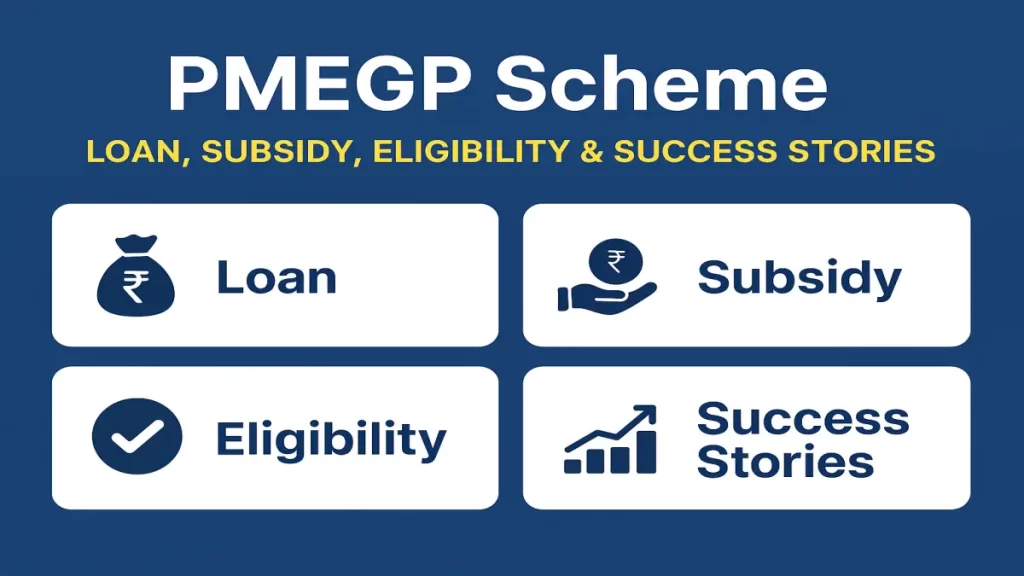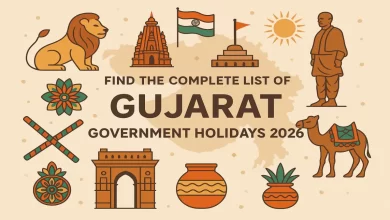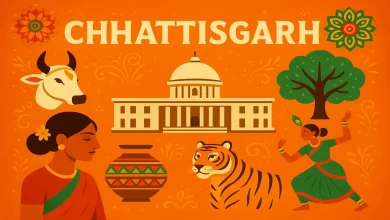The Prime Minister’s Employment Generation Programme (PMEGP Scheme) is a flagship credit-linked subsidy scheme launched in 2008–09 by the Government of India. It aims to create sustainable self-employment opportunities by helping individuals and groups set up micro-enterprises in non-farm sectors.
The scheme is implemented by the Khadi and Village Industries Commission (KVIC) nationally, and by State KVIC Directorates, State Khadi & Village Industries Boards, and District Industries Centres at the state/district level.
Table of Contents
The Prime Minister Employment Generation Program (PMEGP) Highlights
| Issuer | Ministry of Micro, Small and Medium Enterprises |
| Who is eligible | 1. Individuals above 18 years old 2. Self Help Groups 3. Institutions 4. Charitable Trusts 5. Co-operative Societies |
| Repayment tenure | 3 to 7 years |
| Interest rate | 11% to 12% |
| Maximum project cost | ₹ 25 Lakh for manufacturing sectors ₹ 10 Lakh for service sectors |
| Subsidy | 15% to 35 % |
| Education qualification | Applicant must be at least 8th standard pass |
| Website | https://www.kviconline.gov.in |
What are the main Objectives of PMEGP Scheme?
- Promote self-employment and entrepreneurship among unemployed youth and artisans.
- Encourage the establishment of micro and small enterprises in rural and urban areas.
- Provide financial support through loans and subsidies.
- Generate sustainable local jobs and reduce migration.

What is PMEGP Loan And Subsidy Structure
The scheme provides support through a credit-linked subsidy model:
- General Category: Subsidy: 15% (Urban), 25% (Rural)
- Special Categories (SC/ST/OBC, minorities, women, ex-servicemen, physically disabled, NE & Hill States): Subsidy: 25% (Urban), 35% (Rural)
- Beneficiaries must contribute 5–10% margin money, and banks provide the remaining loan.
Eligibility Criteria for the PMEGP Scheme
- Individuals aged 18+, with minimum VIII standard education (for projects above ₹10 lakh in manufacturing and ₹5 lakh in services).
- Self-Help Groups, Co-operatives, Charitable Trusts, NGOs can apply.
- Existing units under other subsidy schemes are not eligible.
Scheme Outlay And National Impact
- Outlay (2021–22 to 2025–26): ₹13,554.42 crore with a target of 4 lakh new projects and 30 lakh jobs
- Since inception (2008–09 to FY 2023–24): Over 9.86 lakh units established, generating 80.52 lakh jobs
Recent Performance
- FY 2023–24: 89,118 units set up, 7.12 lakh jobs created
- FY 2021–22: 1,03,219 units set up, creating 8.25 lakh jobs
- Recent subsidy disbursement: ₹300 crore to 8,794 beneficiaries, linked to loans worth ₹884 crore
Special Category Beneficiaries
- Women entrepreneurs: 3,22,195 projects assisted up to Dec 2024
- Differently-abled beneficiaries: 5,704 projects since inception, including 349 in FY 2023–24
Success Stories and Impact
1. Hydraulic Equipment Manufacturer – Udhampur, J&K
Nardeep Singh availed a PMEGP loan of ₹24.96 lakh to start a hydraulic equipment manufacturing unit under the Jammu & Kashmir Khadi and Village Industries Board. His enterprise now employs 25+ local youth.
Source: PIB / India Press Release
2. Welding Works Entrepreneur – Neemuch, Madhya Pradesh
Rajmal Gayri, once a daily wage welder, started Shri Dev Welding Works with a ₹10 lakh loan (35% subsidy) under PMEGP. Today, he employs 10–12 workers and supports farmers with tools.
3. Tribal Entrepreneurs – Lohit District, Arunachal Pradesh
A research study highlights that PMEGP significantly improved income, asset creation, and livelihoods of tribal beneficiaries in Lohit district.
Source: Recent Scientific Journal
How to Apply for PMEGP
To apply for prime minister employment generation programme loan, follow the below steps:
- Step 1: Visit the PMEGP Online Portal.
- Step 2: Register and fill the application form with project details.
- Step 3: Submit via District Industries Centre / KVIC / KVIB.
- Step 4: Banks evaluate and sanction loan.
- Step 5: Subsidy is released after unit verification.
PMEGP Loan Application – Document Checklist
Find below the prime minister employment generation programme loan application documentation checklist
| Document Type | Required Documents | Notes / Tips |
|---|---|---|
| Identity & Age Proof | Aadhaar Card, PAN Card, Voter ID / Passport / Driving License | Aadhaar is mandatory. PAN required for bank loan processing. |
| Address Proof | Aadhaar, Ration Card, Utility Bills, Bank Passbook | Address on Aadhaar should match application. |
| Caste / Category Certificate | SC/ST/OBC Certificate, Minority Certificate, Women self-declaration | Required for special subsidy rates. |
| Educational Qualification | 8th Standard Pass Certificate, Marksheet, Diploma | Mandatory for projects >₹10 lakh (manufacturing) / >₹5 lakh (service). |
| Project-Related Documents | Project Report, Machinery / Raw Material Quotations, Prior Training Certificates | Prepare a realistic project plan; enhances bank approval chances. |
| Bank Documents | Bank Passbook, 6–12 months Bank Statement | Account must be in applicant’s name. |
| Special Category / Area Certificates | Rural Area Certificate, NE / Hill Area Certificate, Physically Challenged Certificate | Required for enhanced subsidy rates. |
| Group / Organization Documents | SHG / NGO / Trust Registration, Memorandum of Association (for cooperatives) | Mandatory if applying as a group entity. |
| Other Supporting Documents | Any additional KYC or government-issued proof | Keep digital copies ready for online submission. |
Interesting PMEGP Scheme Data
| Data Point | Details |
|---|---|
| Employment Generation Trend | Jobs created: 8.25 lakh (2021-22), 7.12 lakh (2023-24), estimated 3.02 lakh (till Sept 2025) |
| Urban vs Rural Impact | 80%+ units in rural areas; rural jobs ~8.19/unit vs urban ~8.07/unit; 64.55 lakh rural jobs total |
| Special Category Beneficiaries | ~50% units by SC/ST and women; margin money 5% vs 10% for general; subsidy up to 35% in rural areas |
| Margin Money & Loan Sanction Trends | FY 2023-24: ~1.62 lakh applications sanctioned; ₹1.04 crore (in thousands) margin money claimed |
| Training & Skill Development | Training exemption for applicants with prior 10 days offline or 60 hours online training |
What are the Challenges of PMEGP Scheme
- Bank delays in sanctioning loans.
- Low awareness among rural beneficiaries.
- Difficulty in preparing project reports without expert help.
Government has introduced online filing, model project profiles, and training programs to bridge these gaps.
Conclusion
The PMEGP scheme has emerged as a cornerstone of India’s self-employment mission. With nearly 10 lakh units and over 80 lakh jobs created, it proves the potential of grassroots entrepreneurship.
By empowering youth, women, and marginalized groups, PMEGP not only strengthens India’s economy but also builds inclusive and self-reliant communities.
Frequently Asked Questions (FAQs)
Find below answers to some of the most frequently asked questions about the PMEGP scheme.
What is the maximum loan amount under PMEGP?
Up to ₹25 lakh (manufacturing) and ₹10 lakh (service).
Can women entrepreneurs get special benefits?
Yes, women fall under “special category” and can get 25–35% subsidy.
How long does it take for subsidy to be released?
Subsidy is held in a separate account for 3 years, then adjusted against loan after unit performance review.
Can I reapply if my application is rejected?
Yes, after addressing the issues raised (documentation, project feasibility).
Can PMEGP be combined with other schemes?
No, you cannot avail double subsidies. But you may avail training & advisory services from other schemes.
More For You
- eCourts Services In India
- Jeevan Pramaan Patra
- Toll-Free CM Helpline Number
- Top Government Schemes Offering Financial Support To Small Businesses
 Full List Of Bank holidays in Gujarat 2026
Full List Of Bank holidays in Gujarat 2026 Full List Of Bank Holidays In Chhattisgarh 2026
Full List Of Bank Holidays In Chhattisgarh 2026